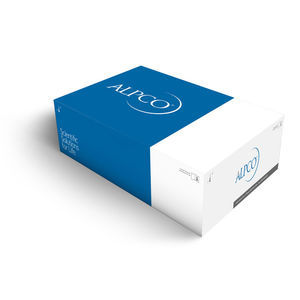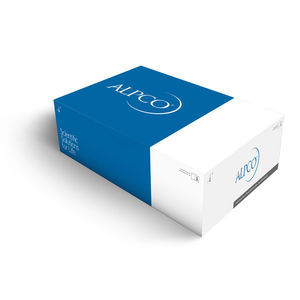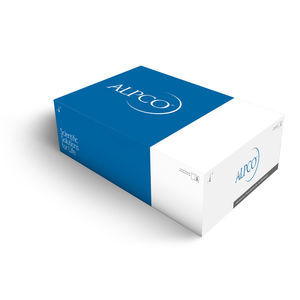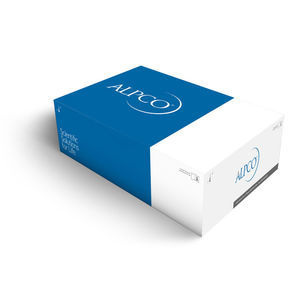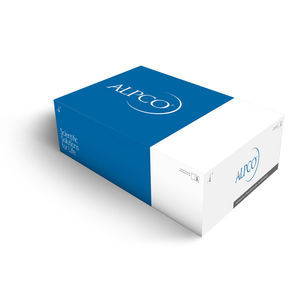
Research test kit STELLUX® for animalsELISAchemiluminescence
Add to favorites
Compare this product
Characteristics
- Applications
- for research
- Patient type
- for animals
- Analysis mode
- ELISA, chemiluminescence
- Sample volume
0.025 ml
(0.00085 US fl oz)- Specificity
100 %
Description
Glucagon-like peptide-1 (GLP-1) is an extensively well-characterized incretin hormone which regulates both insulin and glucagon secretion. GLP-1 is a highly sought after therapeutic target due to its beneficial effects on glucose homeostasis, particularly through regulation of beta cell mass, function, and viability. GLP-1 is produced in intestinal L-cells in response to food and is well conserved across species. GLP-1 is derived from the cleavage of proglucagon to generate a 1-37 amino acid peptide. Fasting reduces circulating levels of GLP-1. GLP-1 has many physiological effects on the body. Diabetes and obesity scientists have been using two main GLP-1 research approaches: DPP-4 inhibition and GLP-1 analogs. DPP-4 can inactivate GLP-1 to its forms of GLP-1 (9-36 amide) and GLP-1 (9-37). By inhibiting DPP-4, scientists hope that GLP-1 can continue to influence insulin secretion and restore balance to energy homeostasis. The goal of developing GLP-1 analogs is to engineer a better GLP-1 molecule that has a longer half-life, thus providing longer influences over insulin secretion.
Sample Volume: 25 µL
Analytical Sensitivity: 0.15 pM
Functional Sensitivity: 0.45 pM
Regulatory Status
Research Use Only. Not for Use in Diagnostic Procedures.
Product Distribution
Available Worldwide
Range
0.45 - 151.6 pM (1.5 - 500 pg/mL)
Sensitivity
0.15 pM (0.49 pg/mL)
Sizes
96 Wells
Catalogs
Product Catalog
67 Pages
Related Searches
- Assay kit
- Blood assay kit
- Serum assay kit
- Immunoassay assay kit
- Plasma assay kit
- Infectious disease detection kit
- Immunoassay rapid diagnostic test
- Molecular test kit
- Whole blood detection kit
- Optical assay kit
- Clinical assay kit
- Fluorescence assay kit
- ELISA assay kit
- Research assay kit
- IgG test kit
- Strip detection kit
- Laboratory detection kit
- Cell assay kit
- Urine assay kit
- Animal assay kit
*Prices are pre-tax. They exclude delivery charges and customs duties and do not include additional charges for installation or activation options. Prices are indicative only and may vary by country, with changes to the cost of raw materials and exchange rates.






